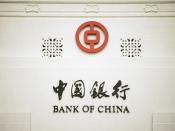Bureaucracy is one of the pillars of modern western society. Although this statement is debatable from many aspects, most would agree that, at the very least, our lives are greatly affected by bureaucracy. Bureaucracy is the 'pure form of rational organization' (Newson, Jan 11). Not only is it a method for achieving goals efficiently and effectively, but it is acclaimed as the most able strategy to meet objectives. The World Bank is a classic example of a bureaucratic organization. It embodies all the characteristics necessary to qualify; from its complicated hierarchy and impersonal relations, to the specialization and career orientation of its employees. However, not everyone agrees on the competency of the bureaucratic organizational system. George and Sabelli in their book Faith and Credit claim that is the very structure of the World Bank which causes its failures, as well as explaining its continued existence despite these mistakes. Using Faith and Credit, with a focus on chapter six, it will be shown that it is the bureaucratic methods themselves which twist the World Bank's goals, and that these methods undermine the tasks which the Bank has set for itself.
The World Bank is one of the world's most powerful agencies. Although it characterizes itself as a purely economic institution -- which controls the lending of billions of dollars -- in practice its influence, wealth, and policies all result in having immense political power (Faith 1). Although originally created to serve as an institution to help rebuild the world (i.e. Europe) after World War II, its task has since shifted to development work and poverty reduction. Through its immense control of wealth, and its international reputation, the Bank has managed to lend billions to 'under-developed' nations. The loans take many forms, including financing of mega-projects and structural adjustment. Beginning...



Very Good
This essay is written in great depth and doesn't miss a beat. Good platform in which to write up your own assignment. Presents a number of good ideas and is well referenced. I know as it has given me the impetus to write my own assignment.
0 out of 0 people found this comment useful.